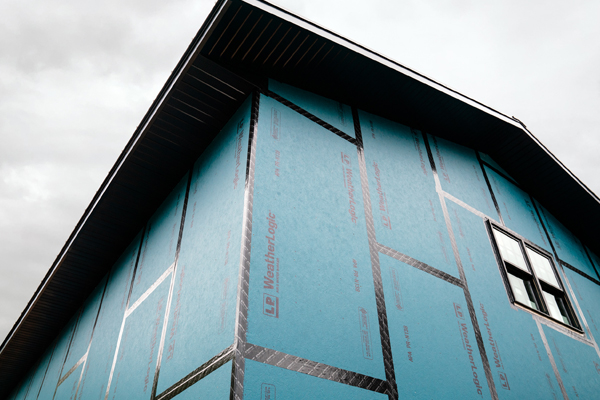Risk Factor® Wind Factor: Calculating Wind Risk in Construction
More than half of the U.S. faces the threat of excessive and damaging winds for most of the year. Whether it’s hurricane season, tornado weather or fast-moving summer storms, the results from wind damage can be staggering to our communities. Climate change is increasing the risk factor for wind risk.
To increase consideration for building more resilient homes, LP Building Solutions is partnering with the First Street Foundation®, a coalition working to help builders assess and protect against environmental threats from fire, extreme heat, flooding and wind.
What is Risk Factor® from First Street?
Risk Factor is an online assessment tool that makes it easy for builders and homeowners to understand the environmental threats at an address level and learn how risks can change because the environment is changing.
What’s different about this tool is that builders and homeowners enter the homesite’s specific address to review the current and forecasted risk of wind damage over the next 30 years.
What is wind risk? Risk Factor calculates wind risk as the likelihood of a property being exposed to and damaged by severe hurricane-force winds and assigns a risk factor wind risk score from 1 (minimal) to 10 (extreme). To be classified as a hurricane on the Saffir-Simpson hurricane wind scale, a tropical cyclone must have one-minute-average maximum sustained winds of at least 74 mph (Category 1) while a Category 5 storm consists of sustained winds of at least 157 mph.
Remember, hurricane-force wind risk is not confined to coastal areas. Researchers have projected that wind damage will grow along the East and Gulf Coasts over the next 30 years and expand farther into inland areas—communities previously thought to be a safer haven.
Researchers have also discovered that in the next 30 years, an additional 13.4 million properties could be exposed to tropical storm force or greater winds.
What does that mean for wind risk in construction?
Builders along the coast anticipate more and possibly stronger hurricanes are expected to hit. Additionally, as more storms reach higher categories, hurricane-force winds may cut a longer path inland before they are downgraded, potentially damaging even more inland homes.
If you’re building in high-wind-risk areas, it’s a good practice to add additional resilience in the structure where you’re able. You know installing LP WeatherLogic Air & Water Barrier serves as a water-resistive barrier, but it’s also a Structural I Rated Sheathing.

Structural I Rated Sheathing provides increased racking strength over conventional sheathing grades. This higher capacity allows builders and designers an increased shear wall strength to resist the lateral loads induced on a structure. It also offers the opportunity for designers to fine-tune their design for larger or more openings in the wall. Refer to code-referenced shear wall tables for design capacity based on Performance Category (nominal thickness) and grade (Structural I sheathing, for example), so you can make the best choice for each project and its specific wind risk considerations.
For more information on LP WeatherLogic Air & Water Barrier sheathing, be sure to visit the product page.
Continue Reading
News & Stories3 min
History of Partnership with Gary Sinise Foundation
The LP Foundation is a proud partner of the Gary Sinise Foundation, which supports wounded veterans in several ways. You can learn more about the LP Foundation here.
Business Solutions
4 minQ&A: How Home Orientation Impacts Continuous Insulation
There’s a lot to consider when it comes to building an energy-efficient home for your clients and the many nuances that change with each build—including its orientation to the sun. We sat down with Neil Freidberg, Building Science Manager at LP, to unpack the impact of home orientation on continuous insulation needs.
Resiliency Solutions
5 minHOW A RADIANT BARRIER CAN IMPROVE BURIED DUCT PERFORMANCE
One of the questions LP® Building Solutions gets from builders often is about burying ducts in attic insulation and whether combining radiant barrier sheathing with blown insulation over ductwork can benefit homeowners. As with most technical situations, the outcome depends on a nuanced approach. Let’s dig in and explore this question.
Sustainability Solutions
8 minHow to Drive Effective Communication and Collaboration on the Jobsite
Every jobsite has a ton of moving parts, from product shipments, supplies, and schedules to subcontractors and homeowners. It’s no wonder that many project teams can struggle to maintain quality jobsite communication and collaboration throughout the building process. And when communication slips, construction companies inevitably deal with costly errors, inefficient workflows, delayed projects, or wasted time, leaving clients and the team frustrated.